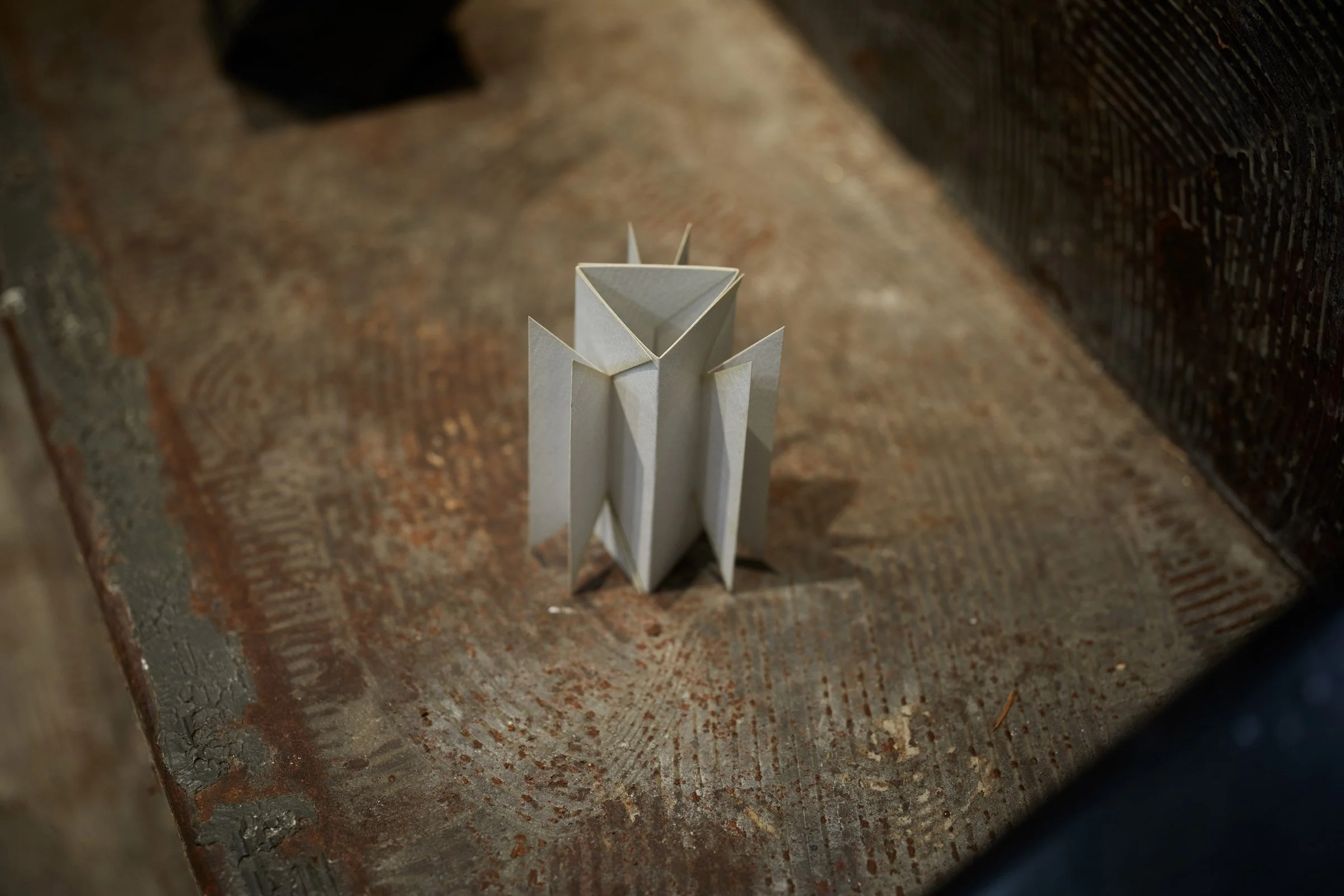A New Horizon

A New Horizon — a Showcase of Contemporary Design from East Asia excavated the trends, philosophies, ideas and materials that underpin modern lifestyles through works by designer from Japan, South Korea, mainland China and Taiwan
An angular tower crafted from the wood of felled Japanese trees; Tokyo’s waste Styrofoam reborn as sculptural furniture; minimalist sweeps of lighting inspired by Korean kiwa roof tiles; and a log-like polycarbonate bench with a rippling chrome-plated surface. These works all formed part of a new exhibition during DESIGNART Tokyo that explored the future of design — in terms of material, form, aesthetics, function — through the lens Asian designers.
For A New Horizon – a Showcase of Contemporary Design from East Asia, curator and Design Anthology founding editor-in-chief Suzy Annetta categorised works ranging from ceramic teacups and wood sculptures to colour experimentations with glass into four ‘chapters’: Biomorphism, Future Traditions, New Belle Epoque and Upcycled.
The designs were complemented by a vibrant spatial backdrop by Tokyo-based architect Kentaro Ishida of KIAS, who transformed the World Kita Aoyama Building exhibition into a naturally unfolding journey of flowing curves wrapped in a symphony of green plants.
For Annetta, the project’s starting point was uncovering the threads that connect a raft of contemporary designers across Asia. Nature — and its reflected form filtered through human imagination — is the main protagonist in the first step of the exhibition journey: Biomorphism.
Here, the ideas of both sea waves and forests were evoked through the rippling surfaces of South Korean designer Dongwook Choi’s Crest and Trough bench, its treelike form made from polycarbonate wrapped in shiny plated chrome. Nearby were the clean lines of Tokyo-based Taiwanese designer Sdanley Shen’s lighting products, rooted in what appears to be a natural rock-like material but is in fact discarded asphalt from road construction.
‘It’s the idea of creating a material that feels as special as precious stone or marble but is in fact manmade,’ says Annetta. ‘There are a lot of designers working with elements of nature, not necessarily using natural materials, but exploring new materials that mimic plant life, the earth or animals.’
The exhibition flowed into Future Traditions, where the concept of balancing past and future was explored through the prism of material, technique and function. There were the modern lines and textured tones of Hong Kong designer Funi Ding’s ceramics, which are crafted from a special purple clay called zi sha, found only in Yixing in Jiangsu Province, China; and the elegant simplicity of Shanghai-based OPEN OBJECT’s contemporary reinterpretations of traditional porcelain in The Jie Collection.
Then there was the modernism of the totem-like Masouleh Tower, which its Japanese creator Hiroyuki Nishimura carved in his open-air workshop from discarded zouki trees salvaged from the Shonan Coast and Izu Peninsula. South Korean designer Bumki Song rounded off the section with a series of objects, from lighting to trays, inspired by abandoned temple roof tiles known as kiwa.
The next chapter, New Belle Epoque, offered unfiltered escapism from the challenging edges of the modern world. As Annetta explains, ‘Since we came out of lockdown, and still today, people seem to just want to enjoy themselves. This is about joy and celebration, a bit of hedonism and lots of colour.’
Highlights included the bright resin-framed Technicolor Flow Mirror by colour-loving Seoul-based studio Cleverclaire, and the shifting palette of the ‘rainbow’ colouring of handblown glassworks by Shizuka Tatsuno.
It was all about Upcycling in the final chapter, with a myriad of innovations rooted in new-generation materials. Among them were Tokyo studio we+‘s explorations into melting and compressing Styrofoam, resulting in an elegant medley of sculptural furniture; and the contemporary kintsugi and bold oil-layered textures of Japanese designer Kairo Kusamoto. Also in this section were the deep black textural surfaces of a series of objects created by Japanese London-based duo PAN-PROJECTS, who worked in collaboration with the organisation Remare to reconfigure discarded plastic fishing gear into a new material.
For all the diversity — in colour, texture, form and function — the exhibition was tied together by a sense of resourcefulness that reflects the modern world. ‘I’m endlessly curious about the creative processes of all these designers,’ Annetta says. ‘There is a thoughtfulness and consciousness among them all, whether it’s about reducing waste, preserving culture, or just making people happy.’
Text by Danielle Demetriou
Images by Nacasa & Partners
















